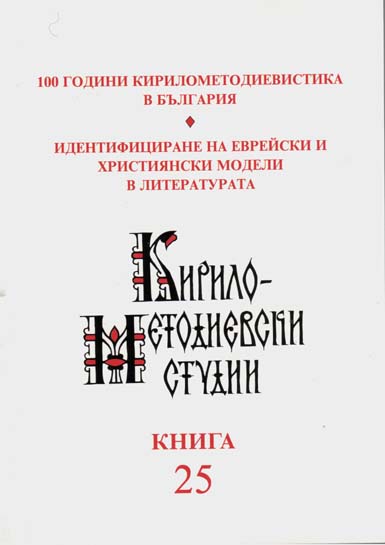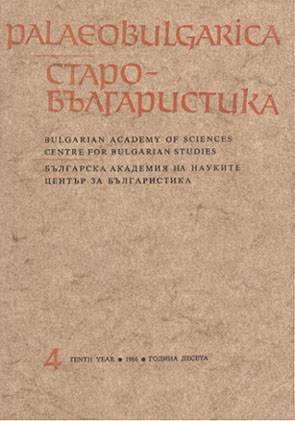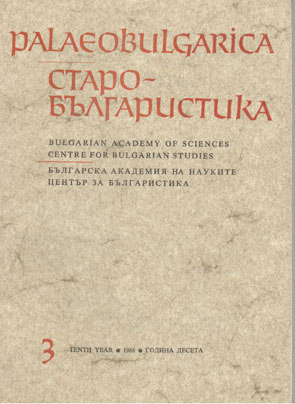Author(s): Tatyana Stanislavovna Borisova / Language(s): Russian
Issue: 25/2016
The present paper deals with text of an important Church Slavonic manuscript – Zagreb Triodion, which is preserved now as a part of the collection in the Croatian Academy of Sciences and Arts, catalogued as IVd107, dating the first half of the 13th century. Specifically, the texts of three translated hymns were studied – the Akathist Hymn, the Great Canon of Repentance by St. Andrew of Crete and the stichera of the same Canon – all included into the services of the 5th week of the Great Lent. The texts of the hymns were studied in comparison with the corresponding texts of the other early Slavonic manuscripts: the Šafařík Triodion of the 12th–13th c. (Bulgarian, RNB F.п.I.74), the Serbian Triodion of the 14th c. (RNB F.п.I.68), the Triodion Orbelskaja of the end of the 13th c. (Bulgarian, RNB F.п.I.102) and the East-Slavonic Triodia: F.I.680 from the RNB collection and Sinodalnaja (Sin. 319) from the State Historic Museum collection. The comparative analyses shows the compilative character of the Zagreb Triodium, which was composed from several Slavonic sources, dating back to the Preslav and Ochrid translations. However, r each hymn in this composition has its own history. Namely, in the Akathist the beginning of the text was taken from the early tradition with the alphabet order of the oikos, while the end – from the later tradition with the same order of the oikos as in the Greek original. In the Great Canon of Repentance, on the contrary, the first ode is from the Preslav version, while the end of the text seems to have much in common with the early versions. As for the stichera, they seem to follow the Preslav version from the beginning up to the end. Taking into account that no Slavonic manuscript doesn’t preserve the full text of neither the Ochrid nor the Preslav translation, one has to seek for their remains in the different early Slavonic manuscripts, among which the Zagreb Triodion surely has one of the most important places. Moreover, in several cases, it seems to be the only manuscript which preserves the unique version of the text which certainly goes back to the different – as opposed with all the other manuscripts under investigation – translation. However, it is difficult now either to date the appearance of this version, either to find out its relations with the other versions.
More...



